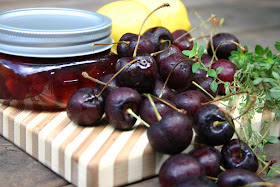 by Joanne O’Sullivan
by Joanne O’Sullivan
photo by Rebecca D’Angelo
Each week, Karen Cruser can give you several dozen reasons why eggs from well-fed backyard chickens are better than those produced in big commercial henhouses. The “rainbow eggs” laid in the backyard of her Asheville home not only look like nothing you’ll see in most grocery stores, but they also pack a flavor that can only be achieved when chickens eat mixed greens, apple peels and other healthy tidbits. In each recycled egg carton she sells at Earth Fare’s West Asheville location, Cruser places a dozen little gems that range in color from bluish-green to light army green to beige, but all have the same rich flavor. Overheard during a meal made from her eggs: “This must be what omelets taste like in heaven.”
Known locally as The Egg Lady, Cruser has been “chickening” since a neighbor gave her a hen and a rooster for Christmas in 1972. Although she was several decades ahead of the curve, she’s hardly alone today in her dedication to a higher standard of eggs than those offered in most grocery stores. A perfect storm of economic downturn and increased interest in local food and sustainable living has spurred a dramatic uptick in the number of backyard chicken enthusiasts nationally, and Cruser is now just one of many women in the Asheville area who count chickens among their chief passions.
When you think about it, it’s a logical progression. Raising chickens lets those who are not willing to buy the whole farm get one Wellie-clad foot into the world of agriculture without leaving city life behind. Female chickens are relatively low-maintenance: no crack-of-dawn wake-up calls like those emitted by their male counterparts, roosters; no bursting udders demanding to be milked round the clock. And yet, they provide green-minded individuals a little more challenge than, say, a row of lettuce, and a little more warmth and interaction than a hive of bees.
And then there are the eggs. According to a recent Mother Earth News study, free-range organic eggs have one-third the cholesterol of those from big commercial chicken farms, and a quarter of the fat, while providing two-thirds more vitamin A and three times the vitamin E. Cruser says what goes into the chicken makes all the difference in the egg that comes out. While the “rainbow” colors of her eggs are the result of each breed’s genetic programming, the large, saffron-colored yolks and thick egg whites can be attributed to her chickens’ all-natural diet. “I spoil them,” she says.
Candler chickener Ashley English concurs that special treatment results in happy chickens and high-quality eggs. Her five chickens are coddled, she says, living in a retrofitted dog run she and her husband call the “chicken palace” and eating raisins and parsley, among other healthy foods. “I hug and scratch them and give them lots of attention,” she says. In return, her “girls” produce four or five tasty eggs per day in the summer and two to three in the winter. A relative newcomer to chickening, English has had her flock for about a year, but has already written a book manuscript about her experience to provide other newbie chickeners with tips on getting started.
If Asheville City Chickens, now known as the “chicken club,” is any indication, she’s got a big audience hungry for just that kind of information. Started last year by Asheville residents Cathy Williams and Jenny Mercer, the organization has more than 400 members in its Facebook group and more than 100 on its listserv. Williams, Mercer and their tech guru Josh O’Connor send frequent Tweets to local chickeners about topics of interest. Around 40 people showed up for their first Chicken Meetup last May. Chickeners (who showed up sans chickens) discussed the new city regulations and how to get started chickening while sharing stories about their own flocks.
Mercer’s run-in with local animal control regulators and Williams’ interest in animal welfare issues were the original impetus for the group: both wanted to promote “responsible and humane ownership of chickens” within the city. Once they started to organize, they found they had a much larger community that shared their goals. With the help of some great communications and marketing tools (including their insider’s-joke bumper sticker motto “We Still Lay”), the group spent the better part of a year preparing to lobby Asheville’s city council to loosen restrictions on backyard chickens. When the issue came to a vote in late April this year, 120 chickeners showed up to voice their support. The group now has 47 chicken-raising members. The measure passed, and now chickens can be legally kept in Asheville within ten feet of a chickener’s home and within 50 feet of property lines (as long as permits are secured and regular inspections take place). The other caveat: no roosters.
With their legal victory behind them, Williams says the group will focus on other kinds of support for urban chickeners, such as starting a buyer’s co-op for organic feed. One of the primary challenges for group members, she says, is convincing neighbors that the birds won’t be a nuisance or a health hazard. In fact, Williams says, “backyard flocks are the answer to preventing disease in chickens.”
The group gives members tips on how to approach neighbors “in a way that instills confidence” and prevents conflict. Williams says that before she brought in her own flock, she and her neighbor had a frank discussion about worst-case scenarios, arriving at solutions for each. It didn’t hurt, she says, that they negotiated a little “eggstortion”: a regular supply of fresh eggs to sweeten the deal.
Cruser thinks it’s wonderful that there are so many new converts to chickening. Now that she has grandchildren to compete for her attention, she’s cut back the size of her flock from 250 to 135, but her remaining hens produce about 16 dozen eggs a week. Earth Fare store manager James Saldutti reports her eggs sell out almost immediately. “She’s got quite a following,” he says. Those who want to take a crack at producing their eggs can go on Asheville City Chickens’ own “coop tour” this summer to get ideas, or read English’s book Homemade Living: Keeping Chickens With Ashley English, which will be published by Lark Books in April 2010. Ready or not, urban chickens may be coming soon to a backyard near you.
For more details on Asheville’s “chicken club,” go to ashevillecitychickens.com. To read Ashley English’s blog, go to small-measure.blogspot.com.
 My lovely lady friends and I got together yesterday to participate in the Canning Across America "Canvolution." Nicole is ultra deft in her pouring abilities.
My lovely lady friends and I got together yesterday to participate in the Canning Across America "Canvolution." Nicole is ultra deft in her pouring abilities. Rachel can bring home the pears, boil 'em up in a pan-and never, never let you forget she's a ham...
Rachel can bring home the pears, boil 'em up in a pan-and never, never let you forget she's a ham... We opted to make spiced poached pears. They were gorgeous- we steeped them in a thyme-infused simple syrup and then swaddled them with bay leaf, black peppercorns, a bay leaf, and a crisp white wine topper. Come winter, I'm jazzing mine up with port and parking my rear in front of the wood stove. Bring it, arctic blasts and cold snaps! I am PREPARED!
We opted to make spiced poached pears. They were gorgeous- we steeped them in a thyme-infused simple syrup and then swaddled them with bay leaf, black peppercorns, a bay leaf, and a crisp white wine topper. Come winter, I'm jazzing mine up with port and parking my rear in front of the wood stove. Bring it, arctic blasts and cold snaps! I am PREPARED!  We feasted on everyone's brunch potluck offerings while the jars processed, including: mimosas; lemon pistachio pesto on market fresh bread; cucumber & yogurt soup with mint, cumin, and dill; fresh peaches & raspberries with Jenny's granola, and Beth's blueberry crumble bars. Jenny, a fellow beekeeper, also generously shared honey from her first extraction. Golden, exquisite nectar-so good, we drizzled it straight into our mouths! Wild times!
We feasted on everyone's brunch potluck offerings while the jars processed, including: mimosas; lemon pistachio pesto on market fresh bread; cucumber & yogurt soup with mint, cumin, and dill; fresh peaches & raspberries with Jenny's granola, and Beth's blueberry crumble bars. Jenny, a fellow beekeeper, also generously shared honey from her first extraction. Golden, exquisite nectar-so good, we drizzled it straight into our mouths! Wild times!  The recipe we used can be found here (word from the wise: peel your pears before attempting to halve them, as indicated in the recipe, unless you enjoy the sensation of slicing skin from your palm...). If you've never canned with friends before, I highly recommend it. Much like knitting circles or book clubs provide socialization and productivity, canning shindigs leave everyone feeling socially revitalized and homeward-bound with bottled-up memories of good times!
The recipe we used can be found here (word from the wise: peel your pears before attempting to halve them, as indicated in the recipe, unless you enjoy the sensation of slicing skin from your palm...). If you've never canned with friends before, I highly recommend it. Much like knitting circles or book clubs provide socialization and productivity, canning shindigs leave everyone feeling socially revitalized and homeward-bound with bottled-up memories of good times!

























